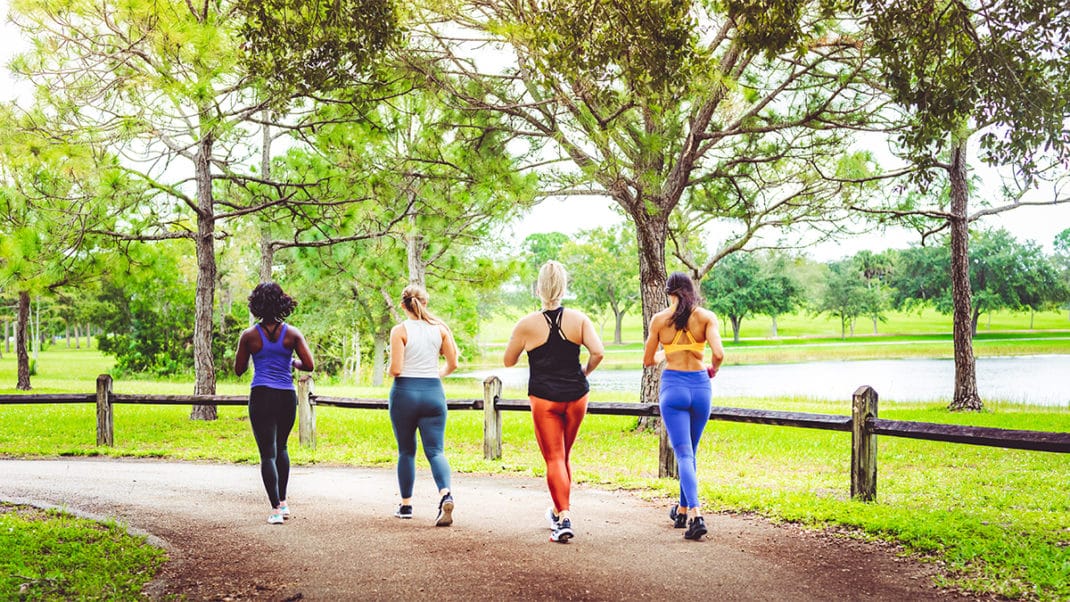Building Community in Group Ex Classes

As group exercise instructors, we can get caught up with creating choreography, choosing music, cuing effectively and teaching proper technique. While all these aspects are important, we sometimes lose sight of the overall picture and miss the opportunity to connect with participants.
Think about the reasons why people choose group exercise and what keeps them coming back. While some attend for the sweat and others enjoy the choreography, some may be motivated more by the social support and group interaction. Therefore, use the time before, during and after class to connect with participants, create personal relationships and make everyone feel part of the group “family.”
This article provides several strategies to help you build a supportive and welcoming class community that will motivate participants, promote social engagement, remove exercise barriers, maintain class retention and support your fitness center’s mission and goals.
Before Class
Arriving early for class is not only essential for preparation; it also gives you an excellent opportunity to get to know your students. This is your chance to make a positive first impression on new participants and a lasting impact on your “regulars.” Attending a fitness class for the first time can be intimidating, so introduce yourself to newcomers, connect them with other participants and explain the format. This first interaction establishes an individual’s perceptions of you and the class and may determine whether the person comes back, so make it count!
Meeting and greeting is only part of the big family picture. Go further, taking time to converse with participants. Learn about their fitness goals, identify their reasons for attending and become aware of any injuries. When you gather information about your students, it shows you have a vested interest in their success, and it can help you tailor your class to meet their needs. Also make an effort to remember names—this will foster a positive instructor-student relationship and build a comfortable and inclusive environment. Before class is also a great time to check in with participants who are returning after a hiatus, to welcome them back and offer support. Your acknowledgement of their absence may make them feel they are valued members of the class.
During Class
Use class time to foster community through instructional techniques and structure. This may be as simple as asking participants to give their neighbor a positive comment or high-five. Try to interact with each person at least once. “Work the room” by moving around, engaging with participants, making eye contact and providing encouraging words throughout class.
Occasionally “flip” the room during a segment of class to give people in the back row a front-row experience, and to let front-row devotees gain a different perspective. This will also allow you to connect with individuals hiding in the back row. Another idea: Give attendees a chance to work together by incorporating partner drills and team activities.
Partner Drills
Partner drills give participants the opportunity to interact, challenge each other, and exchange support and motivation. When designing partner drills, consider the type of interaction you want to create. For example, you may want each pair to complete a specific exercise or challenge, to focus on coaching and motivating each other, or perhaps to engage in friendly competition. Create drills that keep both participants active and engaged. Here are some ideas:
Tag team intervals. Provide each team with two exercises, one that’s high intensity and one that’s low intensity. One partner performs the high-intensity exercise for a period of time while the other performs the low-intensity move, concurrently encouraging the high-intensity partner. Have pairs do this for a set amount of time and then cue them to switch places.
Cooperative partner exercises. Give partners two different exercises to perform simultaneously. For example, one partner squats while holding the other partner’s legs, preparing him or her for decline push-ups.
Coordinated exercises. Have partners work together while performing the same exercise. For example, they hold the handles of two interlaced resistance bands and face each other with arms straight out in front of them. Next, they step away from each other until the “mega” band is taut. Both partners perform a squat while maintaining tension on the band. As they return to a standing position, they do a row.
Team Activities
Team activities integrate cooperation into classes by challenging participants to work in larger groups to accomplish a specific goal. This may help students bond as they support each other and work collectively.
For more team-building ideas, please see
“Creating a Group Fitness Family” in the online IDEA Library or in the May 2016 issue of IDEA Fitness Journal. If you cannot access the full article and would like to, please contact the IDEA Inspired Service Team at (800) 999-4332, ext. 7.




